#marine reptiles
Text
obviously I can't include everything. Rip to the various groups I was forced to leave out, including Mesosaurs, my beloveds.
#tetrapods#marine reptiles#marine mammals#penguins#mosasaurs#plesiosaurs#cetaceans#sirenians#pinnipeds#desmostylians#thalattosuchians#dyrosaurids#pliosaurs#turtles
489 notes
·
View notes
Text

It’s been 10 years ever since the bizzare-headed marine reptile Atopodentatus unicus, which lived about 247-240 million years ago, was discovered from the Triassic rocks of China, and it still continues to bewilder and fascinate many a paleontologist and paleo-nerd to this day.
#atopodentatus#triassic reptile#traissic#triassic period#paleoillustration#paleoartist#paleoartists on tumblr#paleoart#marine paleontology#paleontography#paleontology#palaeoart#palaeoblr#paleoblr#palaeontology#marine reptile#marine reptiles#mesozoic#meosozoic era
124 notes
·
View notes
Text
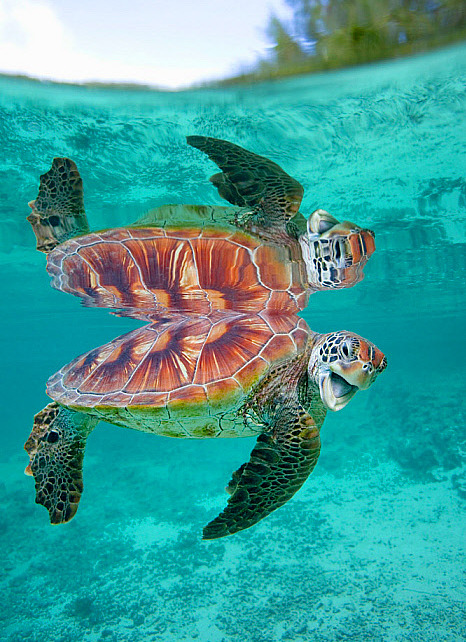
Green sea turtle (Chelonia mydas)
Photo by Klein & Hubert
#green sea turtle#sea turtle#turtle#chelonia#chelonia mydas#marine#sea#ocean#marine life#reptiles#marine animals#marine reptiles#animals#nature#blue#reflection
199 notes
·
View notes
Text
Yeah I know this poll is a little apex predator heavy, but to be frank, most sea creatures (living and extinct) would amount to nothing more than fish/whale/ichthyosaur/shark, etc. fodder and that would not make for a fun poll.
#poll#wet beast wednesday#fish#crabs#cephalopods#sharks#marine reptiles#sea turtle#jellyfish#box jellyfish#extinct species#prehistoric life#mosasaurus#ichtyosaurs#whales#cetaceans#dolphin#marine life#marine biology
136 notes
·
View notes
Text
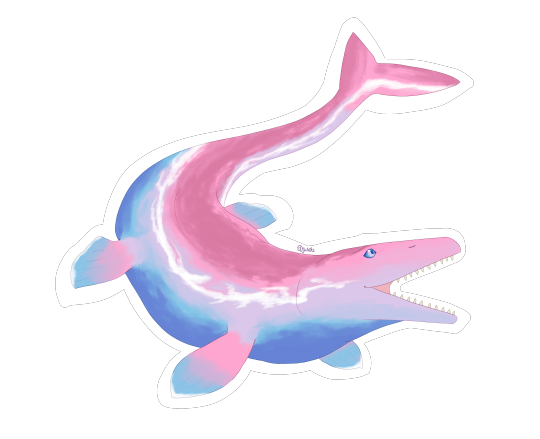
bigender mosasaurus !!
#i love mosasaurs sm#mosasaurus#mosasaurus hoffmanni#marine reptile#marine reptiles#reptile#reptiles#cretaceous#late cretaceous#mosasauridae#mesozoic#paleontology#paleoart#paleoblr#lgbt#lgbtq#lgbtq pride#bigender#bigender pride#pride#my art
88 notes
·
View notes
Text
Critter fact #104:

Shonisaurus, an extinct ichthyosaur, is the state fossil of Nevada.
#Marine reptiles#paleontology#shonisaurus#ichthyosaur#critter facts#Extinct animals#Not a dinosaur#Reptiles
27 notes
·
View notes
Text

Marine Reptile VS Ankylosaur
(i should get more little dinosaurs but nah)
#jurassic park#dinosaurs#dinosaur toys#jurassic world mattel#jurassic world#nothosaurus#borealopelta#palaeontology#mattel#camp cretaceous#prehistoric reptiles#marine reptiles#prehistoric creatures#dino escape#jurassic park mattel#coelurus#toy photography#paleontology#jurassic world dominion#jurassic world fallen kingdom
30 notes
·
View notes
Text

Day 13- Liopleurodon
Prompts
#art#my art#digital art#paleoart#dinovember#paleontology#palaeoblr#marine reptiles#sauropterygids#plesiosaurs#pliosaurs#Liopleurodon#queue
21 notes
·
View notes
Text
2024 Reading Log, pt 1
It begins again!

001. The Seed Detective by Adam Alexander. This was the book I was actually looking for when I stumbled upon and also picked up that awful Curious History of Vegetables. This book also has information about the history and folklore involving various vegetables, but is written by someone with a basic respect for science. Alexander is involved with seed saving networks, and a fair amount of the book is him discussing how he got a type of seed he very much likes, or untangling the history of a heritage variation. It’s a quick read and charmingly written.
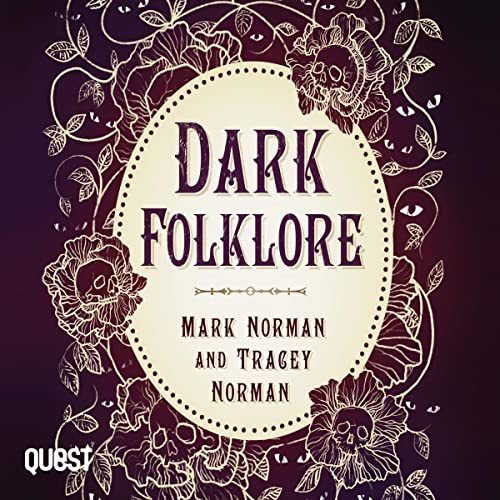
002. Dark Folklore by Mark Norman and Tracy Norman. The book consists of five chapters, each covering a bit of (mostly British) folklore, and they’re basically organized in order of most to least insightful. There’s a good analysis of the Old Hag and other lore surrounding sleep paralysis, a fun miscellany of weird or magical lore related to British churches and clergy, and a look at the traits that folkloric ghosts have that reports of individual hauntings do not. And then there’s a pretty limp chapter about urban legends that’s mostly just Slenderman, and a final chapter on legend tripping and dark tourism that is basically “this is a thing that exists”. Rarely have I read a book so short that runs out of steam so quickly. It feels like this was finished to a deadline, and suffers for it.
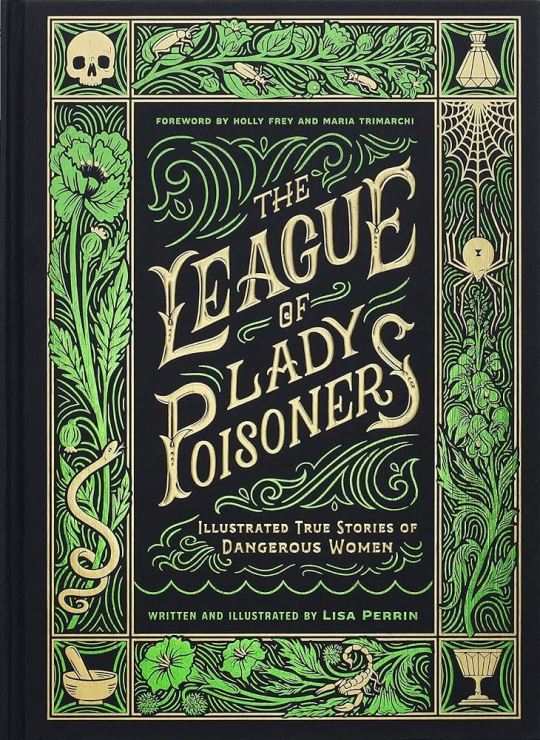
003. The League of Lady Poisoners, written and illustrated by Lisa Perrin. This book is gorgeous. Fully illustrated in gothic style, and with the pages in a pretty, shiny, arsenical green. As the title suggests, the book consists of biographical sketches of women who killed or assaulted with poison, although the book also goes out of its way to talk about the idea of poison as a “woman’s weapon” is a meme rather than a statistical reality. A number of the stories within I’ve heard before (which isn’t a surprise, considering how many books from the bibliography I’ve read), but some of them are new to me, and some quite shocking. Queen Ranavalona I of Madagascar, for example, who may have killed as many as 20% of her subjects through the use of trial by ordeal.
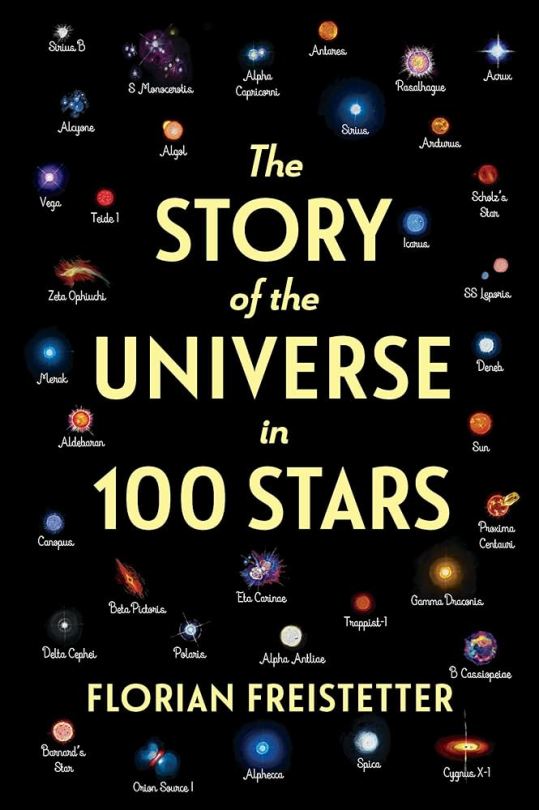
004. The Story of the Universe in 100 Stars by Florian Freistetter. This is a popular science book translated into English, this time from German. As I’ve said before, I’m a sucker for “History of the World in X Nouns” formats for nonfiction. The stars covered here are not all stars—they include black holes, planets that have been mistaken for stars, and even forgotten constellations. Freistetter does a good job of covering all sorts of different types of astronomical lore, and even discusses some fringe hypotheses (like cosmic radiation being the cause of global warming, which he makes sure to debunk extra hard). The biggest flaw with the book, I don’t know whether is an issue with the English translation or the original. The numbers are all wrong. Things like the Earth being 0.8 light years from the Sun (as opposed to 8 light minutes), or the mass of the black hole in the Milky Way being 4 times the Sun’s mass in one chapter and 4 million times in another. It’s a shame, because I really liked this book otherwise, and hope that it gets a paperback edition with some better proofreading.
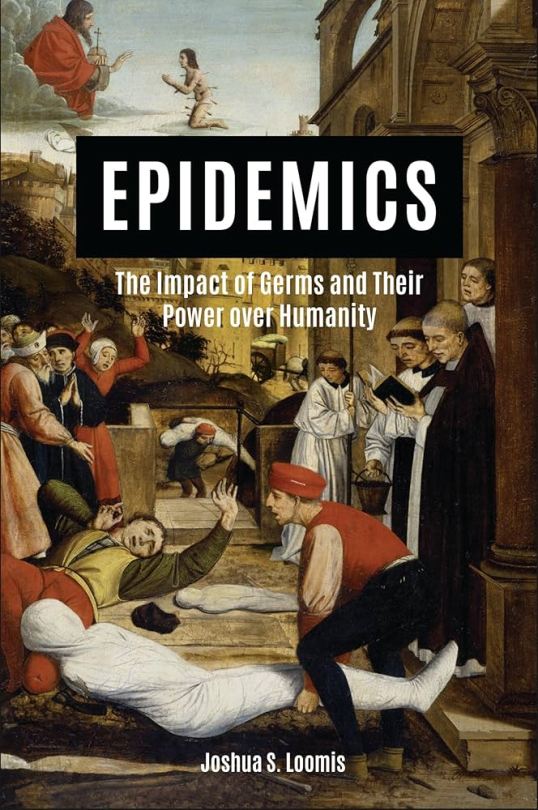
004a. Epidemics: The Impact of Germs and their Power over Humanity by Joshua S. Loomis. This book failed the vibe check for me. The title is a pretty good summary, although substitute “humanity” for “white people”. The book is almost entirely concerned with European and post-colonial American history and how it was impacted by disease. It therefore feels quite blinkered. The discussion of malaria, for example, focuses a lot more on how European powers were able to come in and partition Africa once quinine became available than the actual suffering of the African people (although it at least gets that the impoverished state of Africa today is due to a history of being looted). There are a number of times where it looks like it’s embracing a “Christianity versus Islam clash of civilizations” narrative, and the introduction blithely states that “most people haven’t lived through an epidemic” (obviously, this was written pre-COVID) as if the developing world or the AIDS pandemic didn’t exist. When I got to the book promoting conspiracy theories that Russia had created genetically engineered super smallpox, I gave up on it.
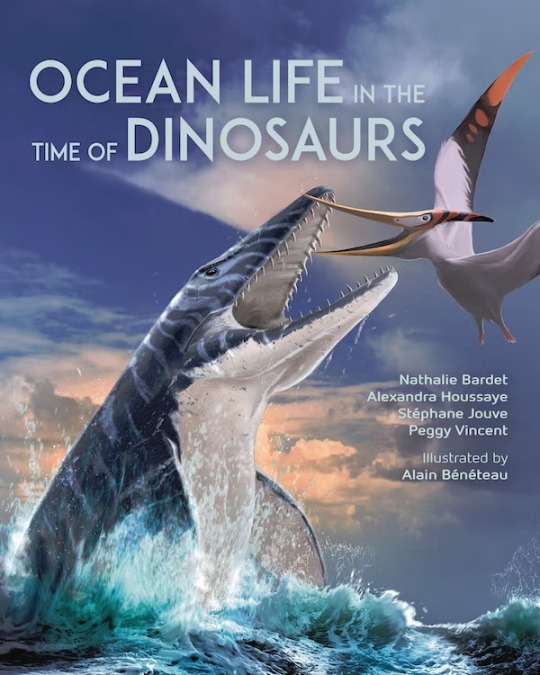
005. Ocean Life in the Time of Dinosaurs by Nathalie Bardet, Alexandra Houssaye, Stéphane Jouve and Peggy Vincent, illustrations by Alain Bénéteau. Another popular science book translated and made available in English, this one was originally published in French. The first half of the book is an overview of various marine reptile groups, mostly but not limited to the Mesozoic, and then the second half discusses particular fossil deposits that are rich in marine reptiles. There is definitely more European bent to the species illustrated and deposits discussed—the fauna of the Western Interior Seaway, for example, is barely mentioned. One of the most notable things about the book is the use of a single illustrator for almost all of the paleoart in the book, which gives it a very unified artistic vision. Personally, I liked Naish’s Ancient Sea Reptiles more (like Naish, I think in terms of phylogenetics, and having a single author, Ancient Sea Reptiles has a more strongly unified narrative voice), but both books are good.
#reading log#horticulture#botany#folklore#true crime#poison#epidemics#astronomy#paleontology#marine reptiles
9 notes
·
View notes
Note
So watching PP yesterday was the first time I learned that mosasaurs were squamates (possibly literally lizards? I wasn't clear). Is that also true of other marine reptiles like plesiosaurs as well? I somehow always thought they were an entirely separate order of Reptilia.
Yep, being squamates means that mosasaurs are literally lizards! There's a bit of disagreement about where they sit in the lizard family tree but they're usually placed around the varanid/snake area, some researchers have explicitly classified them as varanids but that's questionable.
On the other hand, other marine reptiles are from much older lineages unrelated to lizards that are now totally extinct. Plesiosaurs and pliosaurs come from an ancient group of reptiles called Sauropterygians ("reptile flippers") that evolved in the early Triassic, and also includes weird Triassic groups such as nothosaurs and placodonts!
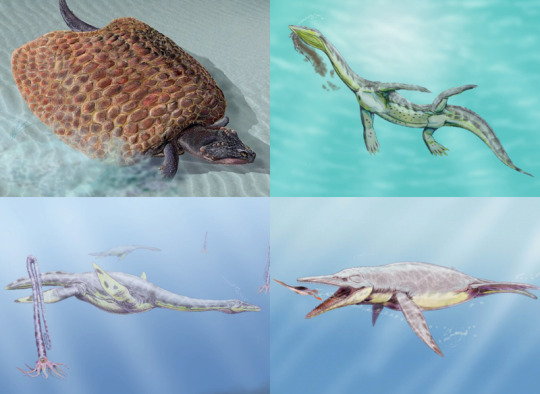
All the major sauropterygian groups! Including Parahenodus (a placodont), Ceresiosaurus (a nothosaur), Aristonectes (a plesiosaur) and Brachauchenius (a pliosaurid plesiosaur). Via Wikimedia Commons.
Ichthyosaurs are in their own weird little group from the early Triassic as well, called ichthyosaurimorphs! One of the earliest representatives of the group is called Cartorhynchus, which probably looks like this:
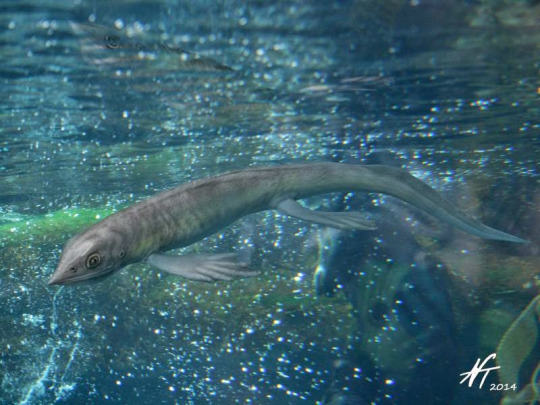
(Art by Nobu Tamura)
In fact, the only other group of marine reptiles aside from mosasaurs that belong to a group of reptiles that are alive today are crocodiles! From the Early Jurassic to Early Cretaceous, a group of marine crocodylomorphs called Thalattosuchians lived in the oceans all around the globe! They were actually just a well adapted to marine life as mosasaurs were, even evolving tail flukes!

(art by Dmitri Bogdanov)
#paleontology#mosasaurs#plesiosaurs#ichthyosaurs#thalattosuchians#marine reptiles#paleoart#palaeoblr#fossils#prehistoric planet
344 notes
·
View notes
Text

Result from the #paleostream For some times now I have been fascinated by the Jialingjiang Formation and it's bizarre content. It's best known for the hupehsuchians, the only place and time they are known from. But there are quite a few other critters as well.
here the little size chart that I made yesterday in preparation. Fun fact about the Jialingjiang Formation: we have not a single fish fossil so far, only incho fossils indicate that that they were present too. The reptiles however, are often preserved fantastically!

Here some examples of hupehsuchians and other animals from there. After some digging, people from our Discord server also found some invertebrates to include in the image.

The environment of this formation was apparently extreme: very warm water, high salinity (lots of potassium), arid climate over the waves (it was a hot soup). This and the relative isolation of the giant lagoon these animals lived in, potentially lead to a lot of endemism.
Btw. I came back to this formation because of the recent Hupehsuchus filter feeding paper. I think it's a fascinating topic. However I'm not sure I can agree with the idea that this animal would be a continuous ram feeder, similar to right whales.

While that fits the probably rather slow locomotion of the animal the jaws look more like those of Rorqual whales. So how does that fit? Thankfully a friend noticed that, while torso and tail are rather stiff, the neck is quite flexible...

so a potential strategy I could imagine here is that they thrashed their heads left and right into clouds of shrimp/plankton, similar to how some crocodiles do it to catch small fish. Let me known what you think. I'm looking forward to more research into these animals.
#sciart#paleoart#paleostream#palaeoblr#hupehsuchian#china#triassic#lariosaurus#marine reptiles#monsters from the soup#goobies just vibing in the hot tub
338 notes
·
View notes
Note
Potentially dumb question but how do Ichthyosaurs and Pliosaurs fit into everything? Are they more closely related to crocodiles or birds?
And (I'm hesitant to ask this but) are they technically fish in the same way all mammals and thus whales could be argued to be technically fish? (If I've now accidentally made this ask cursed, feel free to delete).
So we don't know where Ichthyosaurs or Plesiosaurs (which includes Pliosaurs) go, exactly, but they aren't more closely related to crocs or birds! They might be close to turtles, or not close to any living reptile group at all. They're an enigma
Mosasaurs, however, are straight up lizards. Like actual giant lizards. We don't know whether they're closer to snakes or monitor lizards, but they're lizards
And yup, aaaaaall of them are fish
172 notes
·
View notes
Photo

Courageous, our tiger faces.
[ID: A digital painting of two dolichorhynchops siblings. The background is dark, as it is presumably night. The moon’s light beams through the ocean’s surface, casting rays of light on the two. The female, on the top, is a dark gray with a lighter underbelly and a light spot behind her eye. Her back left fin is scarred, a shark’s tooth embedded into it. She is looking at her brother, who is swimming below her. The male has a considerably lighter coloration, with a nearly white underbelly. They both have green eyes. Although their faces seem neutral, their open mouths and position make it seem as if they are playing whilst swimming. End ID]
#ent’s art#paleoart#paleoblr#dolichorhynchops#marine reptiles#IF YOU KNOW WHERE THESE TWO ARE FROM I LOVE YOU#thalassophobia tw#just in case
41 notes
·
View notes
Text
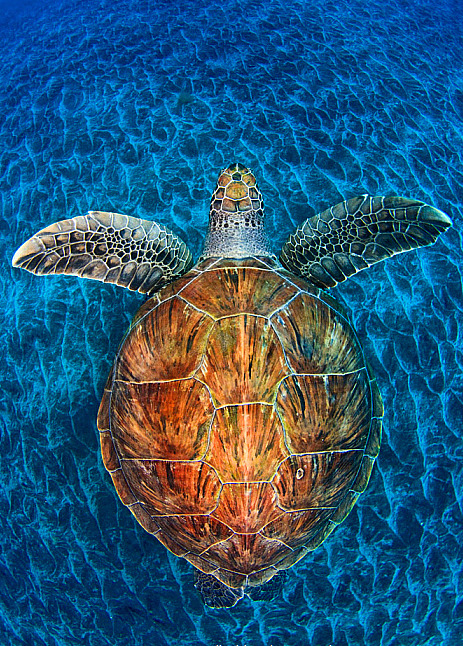
Green Turtle (Chelonia mydas)
Photo by Jordi Chias
#green turtle#turtle#sea turtle#chelonia#chelonia mydas#ocean#sea#marine#marine life#reptiles#marine reptiles#marine animals#nature
32 notes
·
View notes
Text
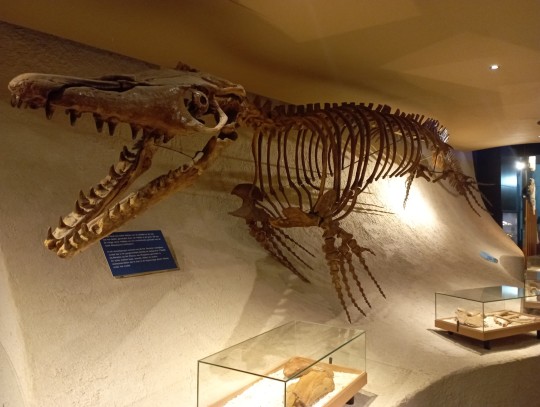
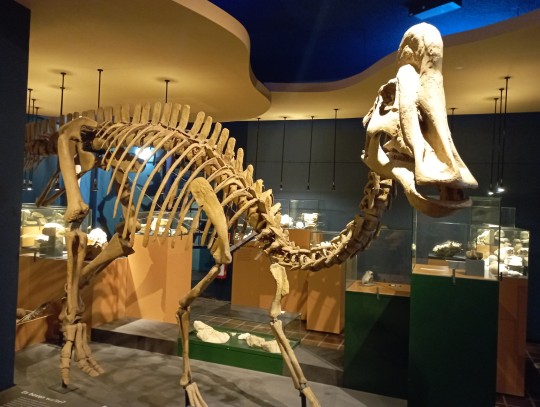

Guys i saw at the museum of Maastricht yesterday
55 notes
·
View notes
Text
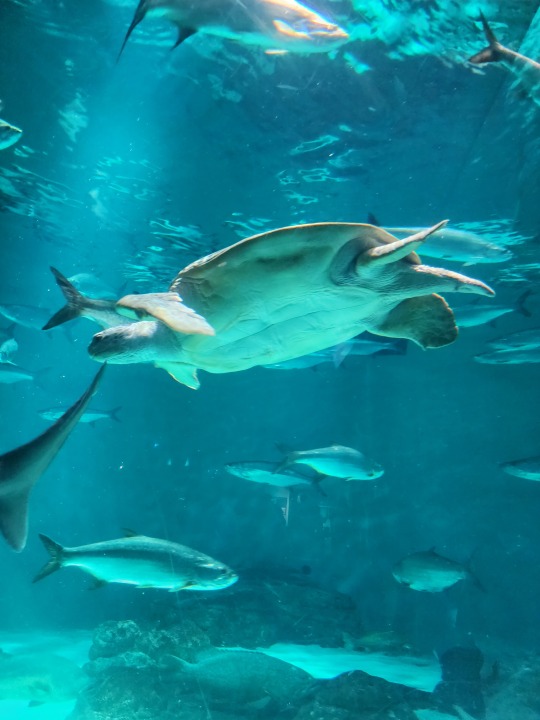
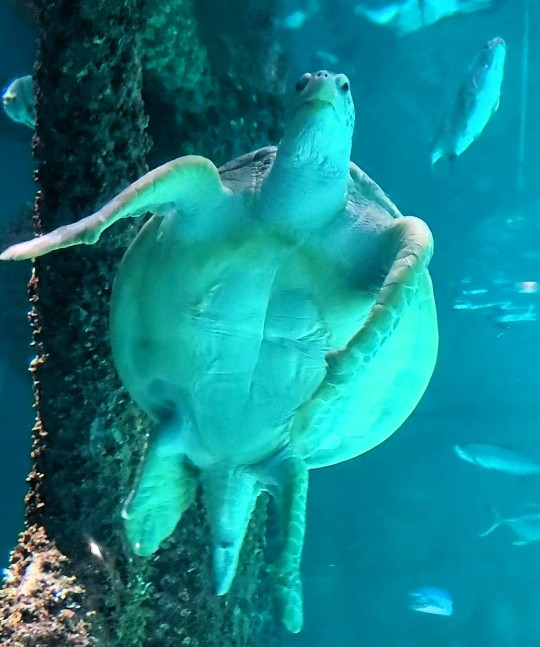
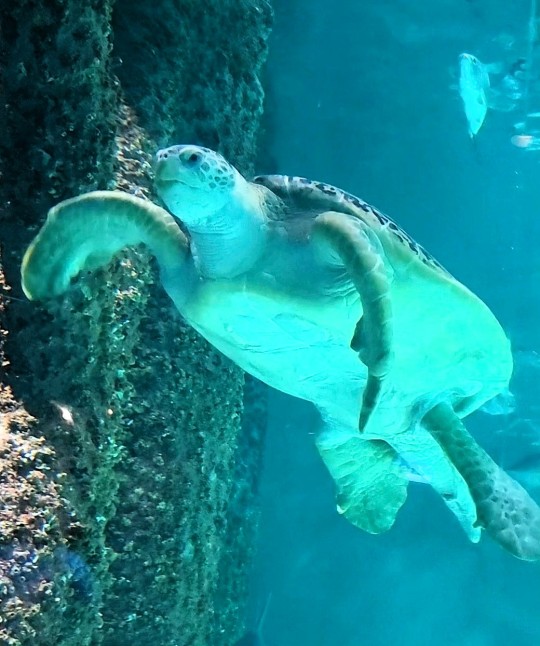
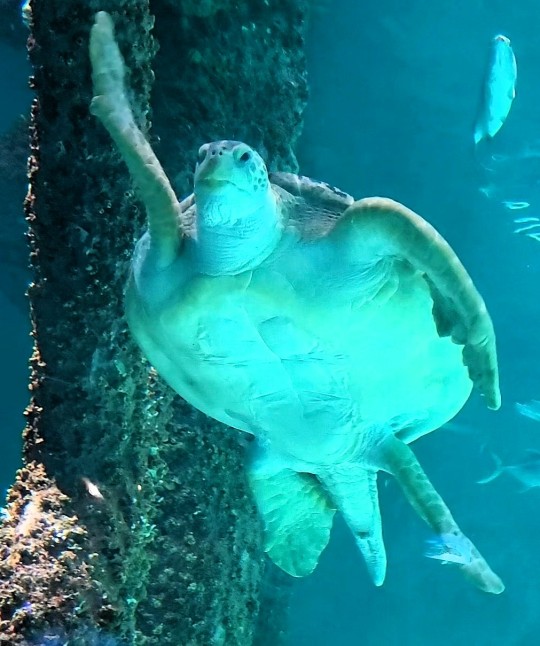
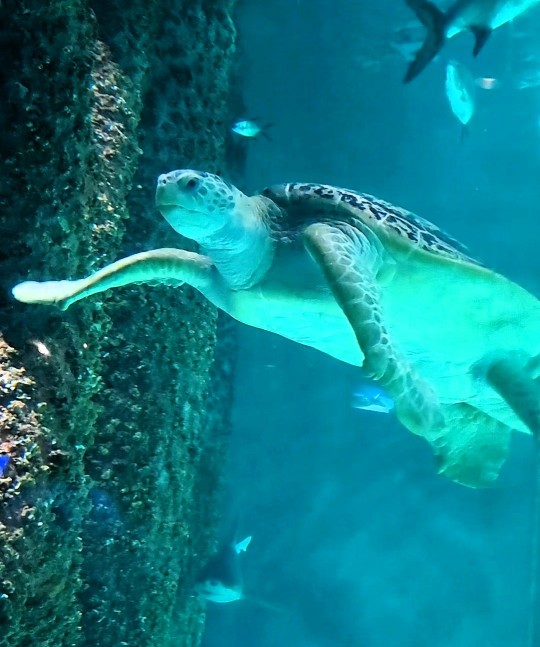
Aug. 13, 2023- Green Sea Turtle
#green sea turtle#sea creatures#sea life#photographer#photographs#photo#photography#marine reptiles#new orleans#new orleans aquarium#audubon aquarium#audubon nature society#sunday#sunday funday#day trip#marine animals#marine life#a moment of time and word#every picture has poetry#louisiana
3 notes
·
View notes